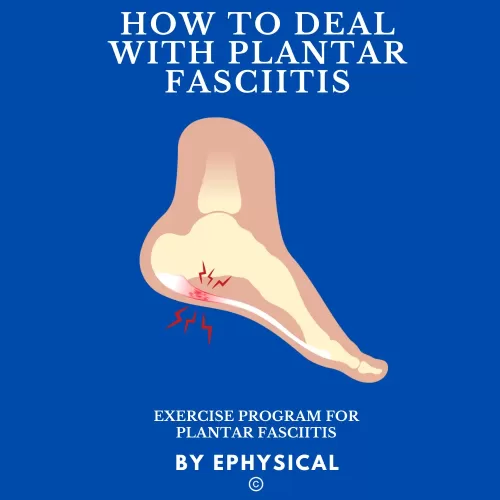How to Avoid Plantar Fasciitis – 7 Steps for Preventing Foot Pain
In this article, I will show you effective strategies and tips to avoid plantar fasciitis.
Plantar Fasciitis Basics
Plantar fasciitis is a prevalent foot condition characterized by heel pain, resulting from the inflammation of the tissue connecting the heel to the toes.
It most commonly affects adults, especially those between the ages of 40 to 60, and is frequently encountered by athletes.
Step 1 – Choosing the Right Shoes
Selecting footwear with adequate arch support and quality material is critical for preventing plantar fasciitis.
Shoes should be comfortable, provide good cushioning, and fit well to avoid undue strain on the feet.
Why do you need proper shoes?
Proper shoes can significantly reduce the risk of developing plantar fasciitis, especially for those who stand or walk a lot for their job or are active in sports.
They help in distributing foot pressure evenly and support the foot arch, preventing overstretching of the plantar fascia.
Step 2 – Stretching Exercises for Foot and Calf Muscles
Stretching is a key component in preventing plantar fasciitis, as it helps maintain flexibility in the foot and calf muscles, reducing the stress on the plantar fascia. Here are some effective stretching techniques:
- Calf Stretches: Stand facing a wall with one foot in front of the other. Keeping the back leg straight and heel on the ground, lean forward until you feel a stretch in the calf of the back leg. Hold for 30 seconds and switch legs.
- Seated Foot Stretch: While seated, extend your leg and pull your toes back towards you. This stretches the plantar fascia itself. Hold the stretch for 30 seconds and repeat with the other foot.
- Towel Stretch: Before getting out of bed, loop a towel around the ball of your foot and gently pull it towards you, keeping the leg straight. This can help reduce morning heel pain associated with plantar fasciitis.
- Achilles Tendon Stretch: Stand with the ball of one foot on a raised surface, such as a step, with the heel hanging off. Lower the heel below the level of the step until you feel a stretch in the Achilles tendon and the calf. Hold for 30 seconds and switch feet.
Regularly incorporating these stretches into your daily routine, especially before and after physical activities, can significantly help in preventing the onset of plantar fasciitis.
Step 3 – Strengthen the Leg and Foot Muscles
Developing stronger feet and legs is crucial in preventing plantar fasciitis. A targeted exercise regimen can improve muscle strength and stability, reducing the risk of injury.
Here’s a focused exercise routine:
- Heel Raises
- Toe Lift
- Ankle Circles
- Leg Swings
- Bridges
- Toe Taps
- Squats
- Lunges
Incorporating these exercises into your daily routine will not only help in preventing plantar fasciitis but also contribute to overall leg and foot health.
Step 4 – Managing Activity Levels
Managing activity levels is a key strategy in preventing plantar fasciitis, especially for those who lead active lifestyles or have occupations that require prolonged standing or walking.
Balancing activity with adequate rest and gradual progression is essential. Here’s how to effectively manage your activity levels:
- Start slowly
- Listen to your body
- Include rest days
- Mix up your activities
- Proper warm-up and Cool-down
- Stay hydrated
By managing your activity levels wisely, you can enjoy an active lifestyle while minimizing the risk of developing plantar fasciitis.
Step 5 – Adjust Sleeping Position
Un-tucking bed sheets can prevent your feet from pointing downward while you sleep, which can tighten the calf muscles and aggravate plantar fasciitis.
Keeping the feet in a relaxed position is recommended.
Step 6 – Maintain a Healthy Weight
Excess weight can put additional pressure on your feet, especially the plantar fascia.
By maintaining a healthy weight, you can reduce the stress on your feet and lower the risk of developing plantar fasciitis.
Step 7 – Regular Foot Assessments and Orthotic Inserts
Regular check-ups with a podiatrist can help identify potential issues early and provide a chance to address them before they lead to plantar fasciitis.
Custom or over-the-counter orthotic shoe inserts can provide additional arch support, distribute pressure more evenly across the foot, and correct structural issues that may contribute to plantar fasciitis.
Referances
- Verywell Fit – Plantar Fasciitis: Stretches to Do at Home: Verywell Fit Article
- Harvard Health – Plantar Fasciitis: Symptoms, Causes, and Treatments: Harvard Health Article
- ASICS – How to Avoid Plantar Fasciitis: ASICS Article





